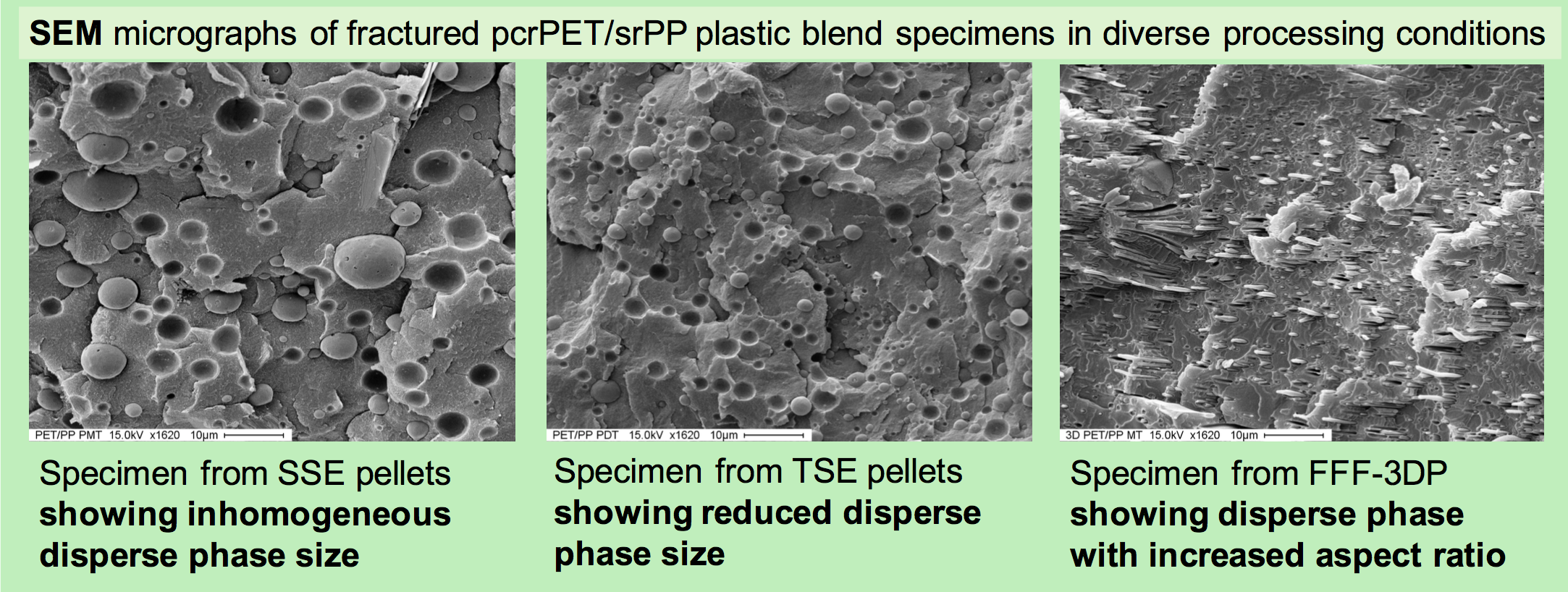Buenos Aires, Argentina and Venice, Italy – The Instituto Nacional de Tecnología Industrial in Buenos Aires, Argentina, has partnered with Argentina based 3D printing companies PRINTALOT, ENYE TECH (b-pet) and CHIMAK to carry out a study which set out the demonstrate that post consumer recycled (PCR) thermoplastics can actually be used in 3D printing to produce fully functional, mechanically advanced devices.
The work was presented at the 6th International IUPAC Green Chemistry conference, which took place in Venice, Italy. The team presented a poster, focused on the development of the filaments for 3D printing based on recycled plastics that was 100% developed by INTI. An oral presentation,
related to the design and testing of the 3D printed devices for gas phase remediation was also led by the CNEA group, leveraging on extensive expertise in Advanced Oxidation Technologies. The INTI group contributed with its experience in 3D printing technologies and processes.
The materials used were developed by INTI and ENYE TECH, and produced commercially by PRINTALOT. The first prototypes were printed in a CHIMAK LEON 200 3D printer. The production of 3D printed photoreactors is part of the project “From waste to fuel: 3D-printed gas phase reactors for low cost methane photocatalytic synthesis by reduction of emitted CO2 in water treatment” funded by the 2015 Green Chemistry for Life research grants (PhosAgro/UNESCO/IUPAC Partnership in Green Chemistry for Life) and awarded to Dr. Natalia Quici. Dr. Natalia Quici and Dr. Nahuel Montesinos belong to the Chemical Environmental Remediation Division of CNEA, led by Dr. Marta Litter.
The focus of the CNEA-INTI lead study consisted primarily in the development and use of a novel material for thermal extrusion (FFF) 3D printing. This material was engineered using a combination of recycled plastics to display enhanced fluency. One of the main goals of the study was to increase ease of use while reducing manufacturing times. The results of the study were recently presented at the International IUPAC Conference on Free Chemistry, by Guido Palazzo, of the Centro de Investigación y Desarrollo para la Industria Plástica at INTI.
Enhanced thermal properties were observed in a modified blend of post consumer recycled PET and industrial scrap recovered polypropylene (PCR PET/SR PP). The INTI research team studied the inter-layer adhesion of the materials and concluded that airtight reactors can be fabricated through the use of thermal extrusion 3D printing. A fully 3D printable airtight photocatalytic reactor was designed to be fabricated in less than 4 hours combining PCR PET and PCR PET/SR PP compound filaments.
“The devices developed as a result of a collaboration between INTI (National Institute of Industrial Technology, Argentina) and CNEA (National Atomic Energy Commission, Argentina) research groups are not yet at a commercial stage,” said Guido Palazzo. “Nevertheless, the low cost of production of the remediation devices and their ease of production in a matter of hours are promising baselines for their commercial insertion after the technology transfer is completed.”
The impregnation of TiO2 nanoparticles in the 3D printed support was successful and the structure was used in an airtight reactor obtaining 55% of NO gas removal efficiency under UV light irradiation. A further in-depth study was displayed at the oral presentation “Recycled 3D Printed Photocatalytic Active Supports for NOx Abatement”.
3D printing with recycled materials proved to be very promising for the optimization of material costs and manufacturing time. “The recycled plastics used for this development are ubiquitous and represent a low- cost raw material,” Palazzo continued. “Filaments for 3D printing are commercially available under the B- PET brand. They print as easy as PLA and are 100% recyclable. The experimental results show an excellent catalyst adhesion to the surface of the printed device and very promising remediation yields.”
While there exists a myth that plastics are easily recyclable, reality tells a very different story: post consumer plastics is very difficult – if not currently impossible – to recycle and use in applications that require high mechanical or aesthetic properties. Nevertheless The use of plastics is increasing exponentially and most of it is not recycled, which means that it often lingers in the environment for centuries and, if burnt, releases toxic fumes and CO2 into the atmosphere.
The promise of 3D printing is that of a more sustainable and distributed manufacturing but this is inextricably linked to enabling the use of post consumer plastics as consumable materials, particularly in thermal extrusion based systems. The continued development of functional methods for recycling post consumer plastics – and implementing them for creating PCR filament – is key to the sustainable growth of the manufacturing industry as a whole.
Subscribe to our Newsletter
3DPresso is a weekly newsletter that links to the most exciting global stories from the 3D printing and additive manufacturing industry.


























